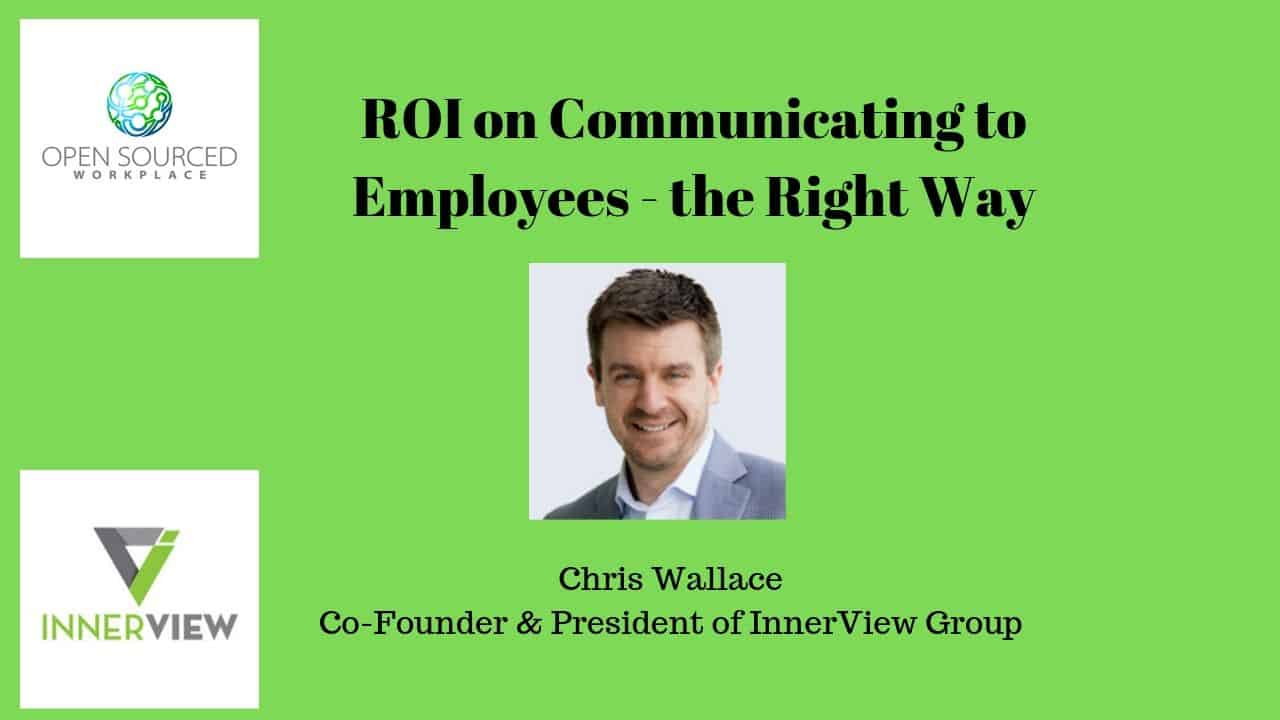Syracuse University graduate Chris Wallace is a passionate individual that loves his work. After working for a large company that had merged with another business, Chris felt the need to leave the new expectations behind. With a sales and marketing background, he found himself becoming an entrepreneur almost by accident.
Chris is now co-founder and president of InnerView, a marketing consulting firm that assists companies to convey their brand meaning in a more uniform way. InnerView works diligently to erase mixed messages and confusion amongst all involved, from the corporate side to the salespeople and the customers. In other words, success is more likely when the gap between marketing and the sales floor is closed.
is now co-founder and president of InnerView, a marketing consulting firm that assists companies to convey their brand meaning in a more uniform way. InnerView works diligently to erase mixed messages and confusion amongst all involved, from the corporate side to the salespeople and the customers. In other words, success is more likely when the gap between marketing and the sales floor is closed.
Chris’s experience has developed in him a knowledge and understanding of sales and marketing that can help a variety of businesses. This knowledge has not only developed a successful marketing consulting business but allows for additional insight in employee retention and engagement.
Drive Demand by Erasing the Disconnect
Organizations spend billions upon billions of dollars to drive demand, but the results don’t always equate. Customers are seeking exactly what is advertised, while salesmen are not always familiar with it. This creates a disconnect that destroys the experience. Not only is it an embarrassing thing for the company to have uninformed people, but the customer might find a competitor to be more knowledgeable about a similar product, thus losing the sale. Chris Wallace’s business, InnerView, aims to build brand alignment between the experience and the promises delivered via marketing.
What is it that creates that disconnect between employees that deal with the public and the customer that wants what they have seen? Companies focus too much on telling people what to say and do and not on convincing their own people that these actions are worth it. The employees might have read the information but failed to retain it. It is important that organizations put the same emphasis on reaching their own people as they do on reaching customers.
Communicating Information to Employees
Chris believes that reaching employees starts with researching how companies are sharing information with their own people. The research that was done on a mass scale shows that the majority of organizations share information with their employees by email and product training. However, the forms that drive better alignment in the company were not email and product training. It seems like a simple solution to get employees more informed and engaged – use an information driver other than email and product testing.
Internal communications is a great way to deliver information, but it has the expectation that employees will read it, process it, and relay it to the customer in their own way. Using internal communications in this way leaves a lot up to the employee and can cause that disconnect. InnerView steps in and helps companies to share information in a more digestible way.
InnerView adds a few things to a company’s communications in order to get personnel to receive the information that is needed in a way that will benefit the company’s connection with its marketing message. For many employees, webinars are far from what the employees want to listen to. They can be long and tedious, not to mention boring. Instead, InnerView produced a short podcast series to provide information in small chunks.
The use of a podcast series is clever and unique. It is modern and it takes 15 minutes a day over a number of days to get the information out to employees in a way that they will engage in and care about. For some companies, this is the best way to share the necessary information to close that gap.
This doesn’t mean that every company should use podcasts to share information – every organization is different. However, every organization should ask questions and find out what they think and what they need. With that information, employees will be engaged and feel more like people rather than subjects.
Winning Deals by Engaging Employees
If marketing builds its brand based on what customers want and they are delivering their value proposition in a differentiated way, more deals will be won. When more employees are doing this, even more deals are won. It is a simple equation that equates value with winning.
If employees are excited and feel positively about the brand that they represent, they are in a position to find success. Because of that, the employees are happier as a result. When employees succeed in their job they feel more motivated and feel better about themselves. It is a win-win for both the company and its people.
Employee engagement is a part of employee happiness. If you can create a happier employee, customers will be served better. Customers can often feel the happiness and excitement that an employee exudes. This not only results in better sales, but it means that the employees stay with the company for longer.
Employee Retention
Chris does not look at employee satisfaction so much as retention because it has a tangible result. In his experience, getting employees to stay a few months longer than the numbers show for the past results in employees staying for far longer than just those couple of months.
The best way that Chris feels that organizations can maximize productivity and employee engagement is to simply ask – he claims this emphatically. It is an underused tool to just ask employees their opinions, needs, wants, and general comments. Asking and not having the will to follow through, it is a risk. So, ask! But also take action.
Because of the risk associated with asking employees questions, organizations must be prepared to do something based on what the workers say. Not only should companies have a follow-up plan, but they must also take action in a timely manner.
Importance of Asking Questions
InnerView uses a tool to analyze responses of certain asked questions to see how far apart the responses from the front line employees and the responses of the corporate team lie. They then work to make those answers more similar. Again, closing that gap results in better sales and a better rate of success.
Failing to ask the questions because the company fears the truth is one that will face trouble in the future. The organization that asks questions and is open to hearing bad news is aimed for success. A company can only fix the bad qualities if it is aware of them.
Connect with Chris Here (Do you know or have have you worked with Chris? If so, help Chris, provide a review for Chris here
(Do you know or have have you worked with Chris? If so, help Chris, provide a review for Chris here )
)
Watch the Interview – Click image below.
Related Questions
What is return on investment? Return on investment, or ROI, is a ratio of how much net profit is earned in relation to the cost of the investment. In layman’s terms, ROI is the rate at which you get money back after investing.
What forms of communication are used often in the workplace? Email is a frequent form of communication in an office, as are meetings and product training sessions. Other forms include phone conversations, instant messages, face to face, webinars, video chats, and memos.
How can custom training work better for employees? Companies must understand that workers are individuals with varied strengths, weaknesses, and learning styles. Some will retain information provided to them verbally while others require visual aids. Customising training allows for all employees to learn better and in their own way.
Check out other Topics:
Coworking , Technology
, Technology , Stress
, Stress , Wellness
, Wellness , Sustainability
, Sustainability , Workplace Productivity
, Workplace Productivity , Employee Experience
, Employee Experience , Hot Desking
, Hot Desking


